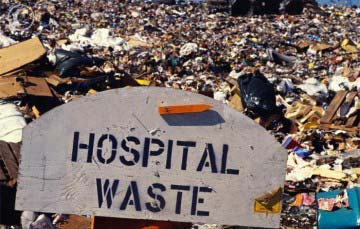A civilized society is born out of care for the environment, a sense of duty and belongingness to the places we live in. Kashmir’s depleting water bodies, diminishing forests, stinking lanes and bylanes, show how apathetic we have become to our own existence, Sana Fazili reports.
Choked drains, stinking lanes and the appalling sight of waste food mixing with human faeces in sewers is what the heritage-rich “Shehr-i-Khas” of Srinagar city looks like for its inhabitants. Such scenes not only petrify the aesthetic sense; they also put a question mark over the sense of responsibility of the citizens living in our society.
According to the latest figures of Srinagar Municipal Corporation (SMC), Srinagar city alone produces 504 metric tonnes of garbage each day. Out of the total garbage generated, 311 metric tonnes come from 62 per cent of the city’s households. Without any care for the civic sense, the household waste is dumped anywhere outside the homes, regardless of the hazards it can cause to the people.
Some residents of old Srinagar city complain about the lack of dustbins in their areas. “We don’t have any dustbin in the area where we can dump the garbage,” says Saniya, a resident of Khaniyar area in old Srinagar city. The garbage comprising of food leftovers kept in the open dumping sites invites packs of dogs which go on a prowl around these areas.
Lately, the menace of dogs has terrorized the inhabitants of Srinagar city. In 2012, doctors attended almost 500 cases of dog bites each month. One of the reasons for this menace has been attributed to the improper disposal of waste material from the households. To tackle the garbage disposal problems, SMC installed 1000 trash cans in the Srinagar city. Ironically, these cans are seldom put to use and people tend to dispose of the garbage anywhere outside their houses.
The mismanagement of the sanitation and drainage system becomes all too clear during the rains. Roads in the interiors of the city become waterlogged even after a light shower. Overflowing drains become a common sight. Every now and then, the drains need to be repaired as they are blocked with plastic bottles and polythene bags.
Over the years, the water bodies of the valley have transformed into choked drains and vast tracts of algal blooms. Anchar Lake, Wular Lake and Dal Lake are symbolic to the tourism and have high ecological value for Kashmir valley. A major portion of the lakes and rivers has been converted into landmass. These water bodies have been stuffed with algal blooms and garbage, resulting in their shrinking size over the years.
Wular Lake which once boasted to be the largest freshwater lake of Asia has also shrunk considerably. Reason; the household wastes, plastics, polythene and hospital waste. The vast expanse of water is now mostly covered by algal bloom. The lake famous for its fish and nuts is dying a silent death at the hands of popular insensitivity. The track created between the floating algae by a rowing boat in Wular Lake is visible from a distance. To restore the beauty of Wular, the government recently took up a massive cleaning project with a budget of Rs 300 crore.
Anchar Lake has turned poisonous by waste from the Sher-i-Kashmir Institute of Medical Sciences (SKIMS), the top medical institute of Kashmir valley. Syringes, dressing bandages and other wastes produced by the hospital are dumped into the lake without any treatment. The lake has shrunk to 50 per cent of its size. River Jehlum flows with plastic bottles, wrappers and other wastes. Its waters have turned into toxic.
Ecologists suggest that the conversion of water bodies into land is a natural process, yet the concern is that human activities over the years have accelerated this process. The locals blame the “hospital waste” for this catastrophe.
The effluents produced by households, hospitals and industries which flows into the major water bodies have also polluted the waters, making it unsafe for consumption and outbreak of water-borne diseases. Hepatitis C broke out in Kokernag area of south Kashmir early this year in January, victimising almost 300 people. The disease caused by polluted water also claimed a life in Kokernag. Gastroenteritis broke out in Kupwara district of North Kashmir, victimising 170 people. The reasons of this epidemic were similar – contaminated water. Official data suggests that the diseases caused by contaminated water are on a rise in the valley.
Apart from affecting the health of people, the polluted waters are hazardous to the life growing in and around the water. “The exotic species of fish have been wiped off from the ecological scene. The poisonous water has also affected the edible plants,” says Dr Irfana who heads the botany department at Government College for Women in Srinagar.
















